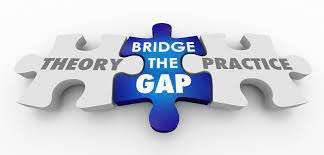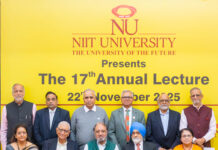Over the past ten years, the education industry has seen a significant upheaval. Technology improvements have made it simpler to connect academic knowledge with real-world application. Virtual reality is the newest technological development in this area. The use of virtual reality in education has completely changed how people learn. Virtual reality technology can produce a realistic and captivating simulation of a genuine area using immersive and interactive 3D models.
The Benefits of Virtual Reality in Education
The use of virtual reality in teaching has a number of advantages. First of all, it increases learning’s interaction and engagement. Textbooks and lectures, which are frequently used in traditional learning methods, can be boring and uninteresting for students. Students can learn about concepts and ideas in a brand-new, engaging way with virtual reality. Virtual reality can also aid in establishing a secure learning environment. Virtual reality, for instance, can imitate operations and medical procedures in medical training, allowing students to practice and learn without endangering real patients. Similar to this, virtual realitty in science and engineering can imitate experiments and offer a platform to test and analyze various scenarios.
Virtual reality can also let students personalize their learning experiences and learn at their own speed. With virtual reality, students can repeatedly view simulations and go over concepts until they fully grasp the subject. In order to concentrate on the regions they might have missed the first time, users can also pause and rewind certain portions of the simulation.
Virtual Reality in Practice
By creating a simulated environment where students can practice surgeries and other procedures, virtual reality can improve medical education. Students can better grasp complicated medical procedures by experiencing them virtually through VR technology. Live patients may no longer be required as a result, making the learning environment safer for the students.

Science education can benefit from having a hands-on component thanks to virtual reality. Students may perform experiments, watch chemical processes, and comprehend scientific ideas that are challenging to comprehend in a regular classroom setting using VR technology. Students can develop a greater knowledge of scientific ideas through the use of simulations, which they can then apply to real-world situations.Due to its ability to imitate an immersion experience, virtual reality can be helpful in language acquisition.
Students can engage with virtual characters to practice dialogues and situations that might occur in the real world. This can aid pupils in honing their language abilities in a simulated but true setting.
By replicating historical events in 3D, virtual reality can help bring history to life. Students’ awareness and interest in history may grow as a result of having the opportunity to experience historical events in a virtual setting. Virtual reality may bring history to life and make it more exciting and engaging for pupils by offering an immersive experience.
Virtual Reality: The Future of Education
The field of education could be revolutionized by virtual reality technology. The way students engage and learn about topics may undergo a significant change as a result. With the quick development of VR technology, it will be simpler to produce lifelike simulations that can improve learning experiences by making them more interactive and engaging.Virtual reality can also aid in overcoming some of the drawbacks of conventional schooling. For instance, it may give remote kids the same access to high-quality education as students in urban regions. Additionally, it can make education accessible to kids who may have had difficulty in a traditional classroom setting due to disability or mobility concerns.
In a short amount of time, virtual reality in education has advanced significantly. It has developed a completely new learning environment and filled the gap between theory and real-world applications. Students are engaged and excited as a result of the immersive and dynamic atmosphere it generates, which improves learning outcomes. The future of education is bright given the rapid improvements in VR technology since it offers a platform to deliver instruction to any student, wherever in the world.
Attributed to Ritika Amit Kumar, Co-founder & CEO, STEM Metaverse
This year educate yourself and develop your career with EasyShiksha


































































